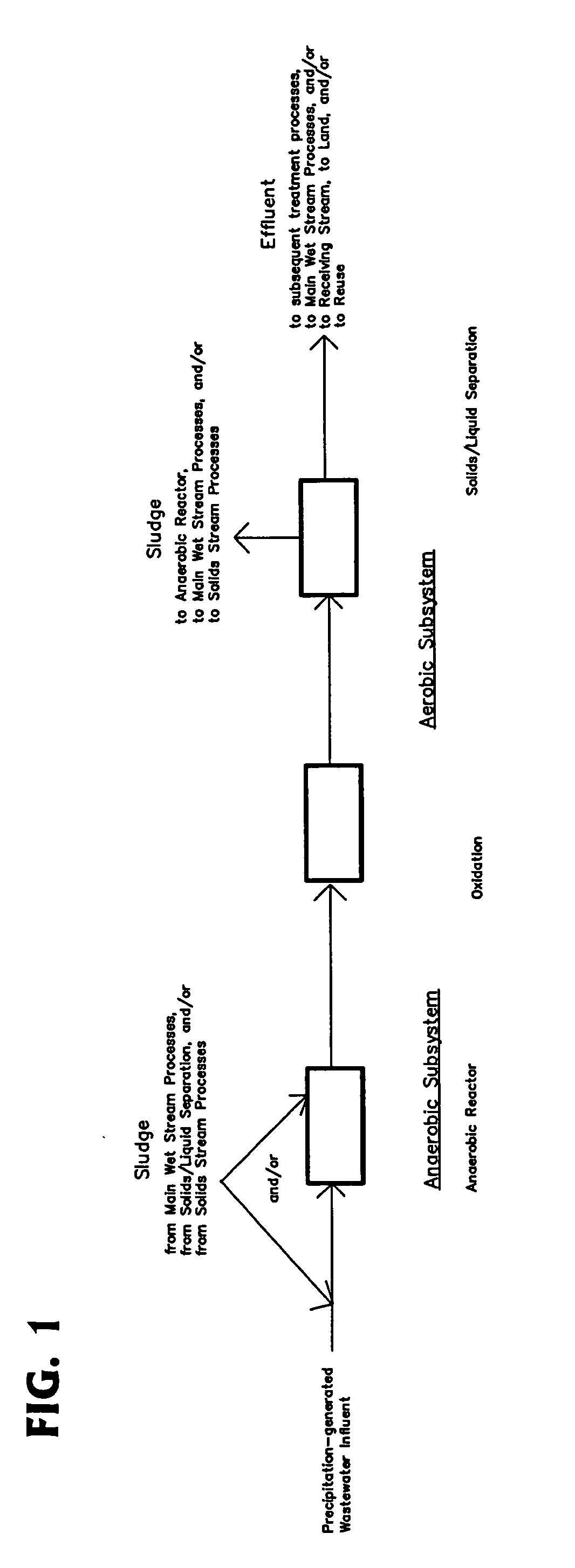Anaerobic biological treatments
a biological treatment and anaerobic technology, applied in biological water/sewage treatment, water/sludge/sewage treatment, chemical apparatus and processes, etc., can solve the problems of insufficient treatment of all flows collected and transported by a centralized system or all flows, complex wastewater treatment systems, and high construction and operation costs
- Summary
- Abstract
- Description
- Claims
- Application Information
AI Technical Summary
Benefits of technology
Problems solved by technology
Method used
Image
Examples
Embodiment Construction
[0013] The present invention relates to the application of the biological adsorption and biological oxidation ability of both conventional wastewater treatment biological selection technology and, if desired, chemically-enhanced wastewater treatment biological selection technology to remove pollutants from precipitation-generated flows collected by a combined sanitary sewer system, a separate sanitary sewer system, and / or a combination of both systems for: (1) the biological adsorption and oxidation of suspended and dissolved pollutants as measured by standard methods tests for carbonaceous biochemical oxygen demand, and / or (2) the biological adsorption of all other dissolved non-conservative and conservative pollutants as measured by all other standard methods tests for such pollutants.
[0014] The system of the present invention uses coupled anaerobic-aerobic suspended growth biological treatment in either an open or closed reactor to adsorb / absorb dissolved organics, suspended mat...
PUM
| Property | Measurement | Unit |
|---|---|---|
| concentration | aaaaa | aaaaa |
| volume | aaaaa | aaaaa |
| concentrations | aaaaa | aaaaa |
Abstract
Description
Claims
Application Information
 Login to View More
Login to View More - R&D
- Intellectual Property
- Life Sciences
- Materials
- Tech Scout
- Unparalleled Data Quality
- Higher Quality Content
- 60% Fewer Hallucinations
Browse by: Latest US Patents, China's latest patents, Technical Efficacy Thesaurus, Application Domain, Technology Topic, Popular Technical Reports.
© 2025 PatSnap. All rights reserved.Legal|Privacy policy|Modern Slavery Act Transparency Statement|Sitemap|About US| Contact US: help@patsnap.com


